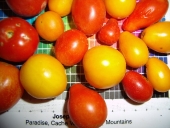




Come join me at www.peacockorchard.com
 4
4




Sometimes the answer is nothing





A human being should be able to change a diaper, plan an invasion, butcher a hog, conn a ship, design a building, write a sonnet, balance accounts, build a wall, set a bone, comfort the dying, take orders, give orders, cooperate, act alone, solve equations, analyze a new problem, pitch manure, program a computer, cook a tasty meal, fight efficiently, die gallantly. Specialization is for insects.
-Robert A. Heinlein









It's never too late to start! I retired to homestead on the slopes of Mauna Loa, an active volcano. I relate snippets of my endeavor on my blog : www.kaufarmer.blogspot.com




A human being should be able to change a diaper, plan an invasion, butcher a hog, conn a ship, design a building, write a sonnet, balance accounts, build a wall, set a bone, comfort the dying, take orders, give orders, cooperate, act alone, solve equations, analyze a new problem, pitch manure, program a computer, cook a tasty meal, fight efficiently, die gallantly. Specialization is for insects.
-Robert A. Heinlein

 2
2








Joseph Lofthouse wrote:I wonder how easily the ground squirrels climb or jump?
At my place, tomatoes that grow sprawling on the ground don't send roots down along the vines. I have tended to select for tomatoes that grow more upright, so that fruits don't lay on the ground and rot, or get invaded by wire-worms. I aim for maximum fruit size to be less than 1/3 Kg (12 oz).
Come join me at www.peacockorchard.com




Su Ba wrote:Elle, in my situation I grow both ways.
A piece of land is worth as much as the person farming it.
-Le Livre du Colon, 1902




"The rule of no realm is mine. But all worthy things that are in peril as the world now stands, these are my care. And for my part, I shall not wholly fail in my task if anything that passes through this night can still grow fairer or bear fruit and flower again in days to come. For I too am a steward. Did you not know?" Gandolf













sortof-almost-off-grid in South Africa: https://www.instagram.com/heartandsoilnoordhoek/




'Every time I learn something new, it pushes some old stuff out of my brain.'
 1
1




Come join me at www.peacockorchard.com

|
Hey, sticks and stones baby. And maybe a wee mention of my stuff:
montana community seeking 20 people who are gardeners or want to be gardeners
https://permies.com/t/359868/montana-community-seeking-people-gardeners
|




